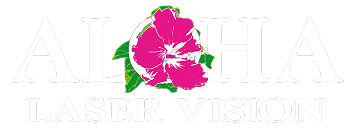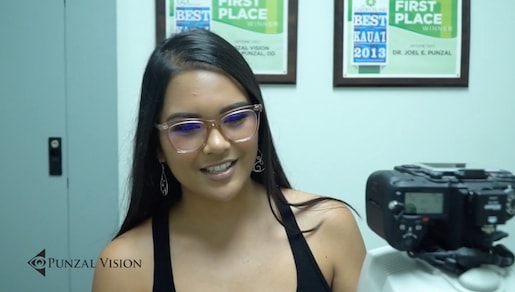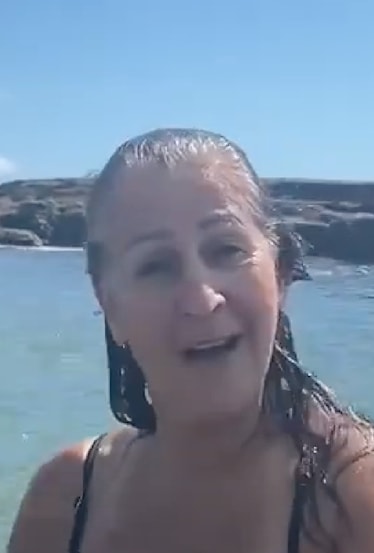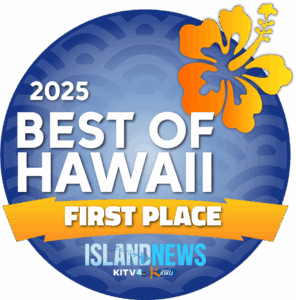Are you tired of the cost and hassle of wearing eyeglasses or contact lenses? Each year, nearly one million people undergo LASIK eye surgery. LASIK, an acronym for Laser-Assisted In-Situ Keratomileusis, is used to correct vision problems such as nearsightedness, farsightedness, and astigmatism, and to reduce a person’s dependence on glasses or contact lenses.
Now, the latest in LASIK eye surgery technology is available at Aloha Laser Vision in Honolulu, Hawaii. For many patients, we can use the state-of-the art WaveLight® PLUS planning technology in addition to the WaveLight® FS200 Femtosecond Laser and the WaveLight® EX500 Excimer Laser, our our LASIK eye surgeon – Alan Faulkner, MD – can help you achieve the sharper, clearer vision you desire with exceptional precision and customization.
As one of the leading providers of LASIK vision correction, we can answer any questions you may have about the procedure, as well as provide you with excellent care from start to finish of treatment. To learn all about LASIK surgery, we invite you to explore the educational sections included throughout this page, or simply contact Aloha Laser Vision today to book a complimentary consultation.
- Is LASIK Eye Surgery Right for Me?
- All-Laser LASIK Technology – WaveLight® Refractive Suite
- Topography-Guided LASIK with Contoura™ Vision
- Preparing for LASIK Surgery
- The LASIK Procedure
- Recovery After LASIK
- LASIK Surgery Cost
- Choosing a LASIK Surgeon
- LASIK in the Military
- Additional LASIK Surgery Faqs
- Schedule a Free LASIK Consultation
Real Patients Share Their LASIK Experiences
I have absolutely adored being able to wake up and see my fiancé clearly, and to be able to watch the sunrise without having to put on glasses or contacts. I love that we were able to take a trip to Big Island without the fuss of worrying about extra contacts or packing cleaning solutions. Being able to birdwatch on Big Island and spot rare species with better than perfect vision (20/15) has been in INCREDIBLE blessing. Mahalo nui loa Dr. Faulkner.
Dr. Faulkner and his team made my surgery experience seamless, easy, and assuring. I could not be more impressed with the better than perfect vision I have received as a result! I will be a proud referral source for Aloha Laser Vision for many years to come! Mahalo nui loa!
There have been so many amazing changes that have occurred in my everyday life since getting my vision worked on! I no longer have to worry about my glasses, I can swim, hike, surf and enjoy every moment with my Ohana without worrying about missing a special second due to my bad eye sight! My over all quality of life has improved immensely. And not to mention I feel 10 years younger not having to wear my glasses all day! I am extremely pleased with my new vision provided by the team and staff at Aloha laser vision!
My experience with Dr. Faulkner and the team at Aloha Laser vision has been nothing but fantastic, from the environment, to the cleanliness and even the amazing staff were nothing but helpful & so accommodating. I had same day surgery done, they helped me with all financial aspects of my surgery and made sure I was as comfortable and up to date on the entire procedure. All and every question I had was answered, I had an overall amazing experience and appreciate everyone one at Aloha Laser vision who helped me through my surgery! Big Mahalo to the whole team there!
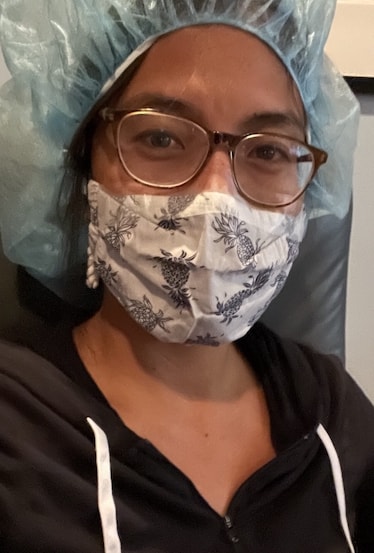

How has vision correction changed your life? It truly is a miracle! My only regret is not doing earlier in my life. It’s only been two weeks since the procedure and I am still an awe of the reality of not having to wear my glasses or contacts. I recommend that anyone considering the procedure, to just do it! Talk with the doctors and representatives at Aloha Laser Vision and they can address all of your needs and concerns. They are truly the best 🙂
I am so grateful to the Aloha Laser Vision Team, specifically Dr. Neola Nipoor and Dr. Elizabeth Hanohano-Hong, and the counselors for making me feel so well cared for. I was really nervous prior to get the Lasik procedure, but the team did a through examination and walked me through the entire process. All of the pre-operative visits, the operation itself, and the post-operative visit was a seamless process and recommend anyone considering it…to just do it or at least inquire.
All-Laser LASIK Technology – WaveLight® Refractive Suite
 The WaveLight® Refractive Suite is the most efficient laser system for refractive surgery in the United States. It includes the WaveLight® EX500 Excimer Laser, WaveLight® FS200 Femtosecond Laser, and Swiveling Patient Bed. The combination of these three technologies produces faster results while reducing the risk of complications during surgery. It allows procedures, such as LASIK and PRK, to be performed with more customization and precision than ever before. Additionally, many patients can benefit from the use of the new WaveLight® Plus system, a treatment planning system that allows LASIK procedures to be developed in a uniquely personalized way that can enhance accuracy and help produce the best possible results.
The WaveLight® Refractive Suite is the most efficient laser system for refractive surgery in the United States. It includes the WaveLight® EX500 Excimer Laser, WaveLight® FS200 Femtosecond Laser, and Swiveling Patient Bed. The combination of these three technologies produces faster results while reducing the risk of complications during surgery. It allows procedures, such as LASIK and PRK, to be performed with more customization and precision than ever before. Additionally, many patients can benefit from the use of the new WaveLight® Plus system, a treatment planning system that allows LASIK procedures to be developed in a uniquely personalized way that can enhance accuracy and help produce the best possible results.
To learn more about all-laser LASIK with the WaveLight® Refractive Suite, feel free to read the sections below.
Alcon WaveLight® PLUS
Imagine LASIK that’s designed not just for your prescription—but for your eyes. At Aloha Laser Vision, we’re proud to be the first in Hawaii to offer the breakthrough Alcon WaveLight® PLUS LASIK system—an innovative, next-generation approach to vision correction.
Unlike traditional LASIK, which relies on general measurements, WaveLight® PLUS builds a fully customized treatment using 3D ray tracing technology. This advanced platform creates a digital twin of your eye, allowing for unparalleled accuracy and the potential to achieve results that exceed 20/20 vision. This system can be utilized for many patients affected by conditions such as myopia and astigmatism.
WaveLight® FS200 Femtosecond Laser
The WaveLight® FS200 Femtosecond Laser is the fastest of its kind. It is a reliable and safe device that can create the corneal flap in about six seconds. During the procedure, suction is slowly applied to the eye through the power of two pumps, which leaves patients with little to no discomfort. Through the use of the femtosecond laser, your eye surgeon can provide results that are predictable, increasing confidence throughout the procedure.
WaveLight® EX500 Excimer Laser
With the most hertz of any excimer laser, the WaveLight® EX500 Excimer Laser is most notable for its impressive speed and ease of use. Its ability to perform faster treatments has even been linked to providing more precise visual results. In addition to its efficiency, the technology has better connectivity over past excimer laser models. It is wireless, making it possible to transfer data among other devices without spending an excessive amount of time inputting the information. As a result, it is also more accurate and provides your eye surgeon with more information to utilize during surgery.
Swiveling Patient Bed
The third part of the WaveLight® Refractive Suite is the Swiveling Patient Bed. It was specially designed to use with the EX500 and FS200 lasers, increasing the speed and safety of vision correction surgeries. The functionality of the bed is demonstrated through its swivel ability and adjustable features, such as the headrest and supporting equipment. As a result, there is a shorter transition time between creating the flap and using the excimer laser. Overall, the bed contributes towards the safety of the system as well as increased patient comfort.
Topography-Guided LASIK with Contoura™ Vision
Aloha Laser Vision continues to bring the latest in laser vision correction technology to our patients. Dr. Faulkner was one of the first eye surgeons in the nation to be trained in and perform Contoura™ Vision topography-guided laser vision correction, and he has now integrated the Alcon WaveLight® ALLEGRO Topolyzer and topography-guided treatment planning software into use at our practice.
This revolutionary platform is the next frontier in customized LASIK, capable of delivering better overall quality of vision for patients with nearsightedness (myopia) and nearsightedness combined with astigmatism. The key to its efficacy is in the diagnostic capabilities of the platform, which can precisely measure and map corneal imperfections to provide a highly personalized LASIK procedure that can yield unparalleled results.
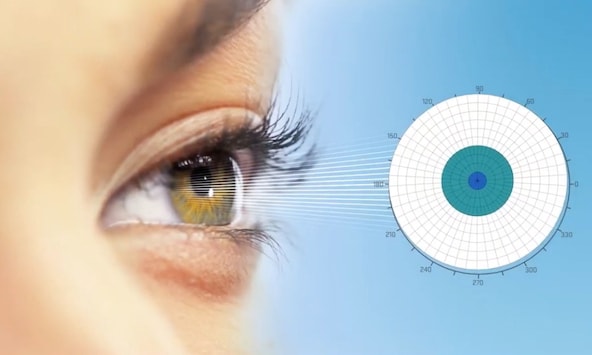

Good candidates for topography-guided LASIK are often those individuals who:
- Have less than eight diopters of myopia
- Do not have over three diopters of astigmatism
- Do not have more than nine diopters of myopia and astigmatism combined
- Are at least 18 years old
- Have a stable vision correction prescription
- Do not have excessively dry eyes
Due to the unparalleled accuracy of topography-guided LASIK procedures, Dr. Faulkner may be able to deliver results that surpass the levels of visual acuity achieved with older methods of LASIK. Studies performed by Alcon® have shown that, of the patients who have undergone topography-guided laser vision correction, 92.7% have achieved 20/20 vision, and of that number, 68.8% achieved 20/16 vision within three months after surgery. Furthermore, clinical trials have also shown a reduction of negative post-treatment visual symptoms.
Ultimately, there is no other procedure with the diagnostic capabilities of topography-guided LASIK, which can translate to the delivery of unparalleled results for proper candidates.
How Do I Prepare for LASIK Surgery?
In preparation for LASIK surgery, you will be instructed to stop wearing soft contact lenses three days to one week before your procedure. Hard contacts or rigid gas permeable (RGP) lenses should not be resumed after your refractive comprehensive eye exam. To avoid particles interfering with the laser’s optics or getting into the eye during LASIK surgery, do not wear any perfume, cologne, body spray, or facial make-up (cosmetics) on the day of your procedure.
What Does the LASIK Procedure Entail?
Thanks to the exceptional precision and efficiency of laser technology, the entire LASIK procedure takes only about 10 minutes to perform here at Aloha Laser Vision. Upon completion, you will be taken back to the pre-op area and discharged.
After the diagnosis has been made and the treatment plan has been developed with the WaveLight® PLUS technology (for ideal candidates), the actual LASIK procedure is a two-step process. In the first step, your eye surgeon will utilize the guided WaveLight® FS200 Femtosecond Laser to precisely create a customized corneal flap in approximately six seconds (per eye). Next, he or she will fold the flap out of the treatment zone, exposing the inner corneal tissue to the WaveLight® EX500 Excimer Laser, which is used to gently reshape the cornea and correct refractive errors based on your unique needs. Once corneal reshaping is complete, the flap is returned to its original position where it bonds without the need for stitches.
Thanks to the exceptional precision and efficiency of laser technology, the entire LASIK procedure takes only about 10 minutes to perform here at Aloha Laser Vision. Upon completion, you will be taken back to the pre-op area and discharged.

How Do I Choose a LASIK Surgeon?
Choosing the right LASIK surgeon is a personal decision, but there are a few requirements you should insist on. Your surgeon should be board-certified, have experience performing the LASIK procedure, and have an outstanding track record (that includes a complication rate of less than one to two percent). Before picking a surgeon, we encourage you to pose the following questions to any doctors you are considering to perform your LASIK surgery:
- Do you only specialize in LASIK surgery?
- Do you offer non-surgical LASIK alternatives?
- Do you routinely perform any other ophthalmic procedures?
- Which laser do you use for LASIK and why?
- Is your laser updated regularly?
- Are routine follow-up visits for one year included in the overall procedure cost?
- What percentage of patients require additional enhancements after the initial LASIK surgery, and are these touch-ups included in the overall fee?
- Do you track your results?
These questions—and any others you think of—should help reveal important information you will need to make the most educated decision about your LASIK practice and practitioner. Most importantly, we suggest you only choose a LASIK surgeon you feel comfortable with and can communicate with clearly.
Dr. Alan Faulkner, our award-winning LASIK surgeon at Aloha Laser Vision, is committed to providing patients with only the highest-quality treatments and procedures to improve and optimize vision. When you choose our eye surgeon for your LASIK procedure, you can feel confident that you have chosen one of the best eye surgeons available. Our patients consistently refer friends and family to our practice and take pride in leaving outstanding online ratings and reviews about their experiences.
To schedule a consultation with Dr. Faulkner, please contact Aloha Laser Vision today.
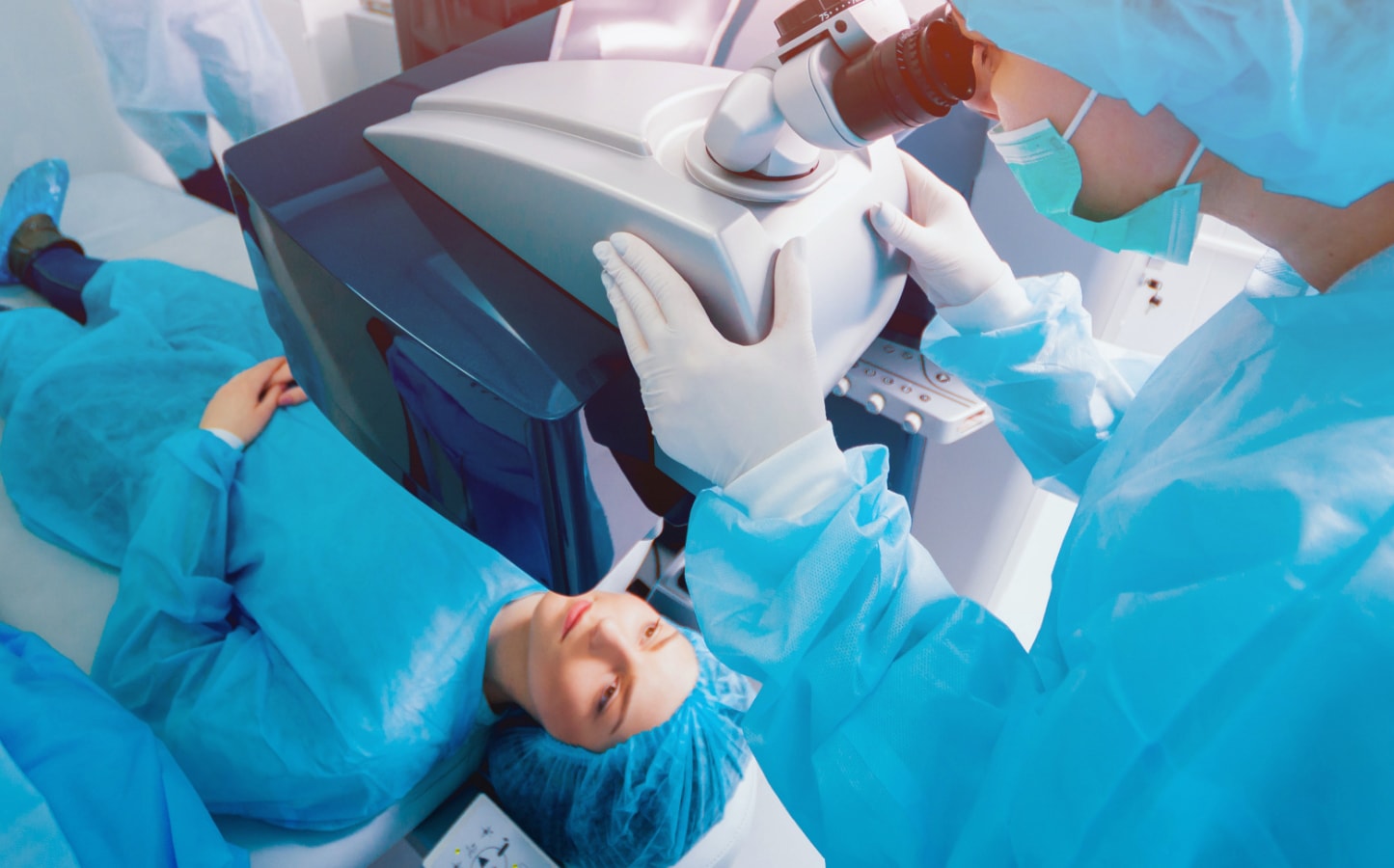
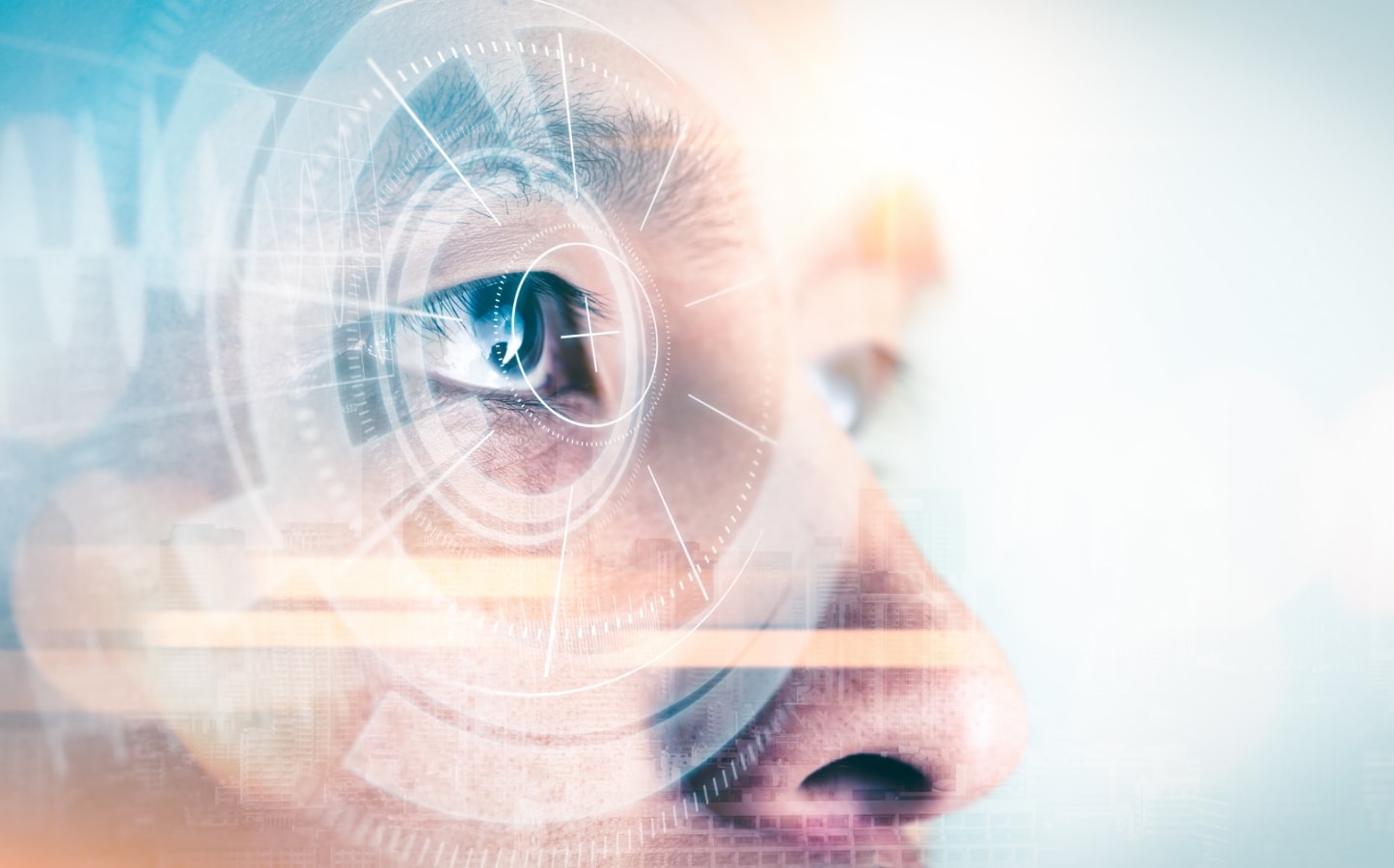
LASIK Surgery Frequently Asked Questions
In an effort to aid patient education, we have provided answers to many of the most commonly asked questions about the LASIK procedure. Simply click on the links provided to find answers to specific questions, or scroll through to read responses to all queries.
Am I a candidate for LASIK?
To answer this question, a preliminary screening and consultation with your doctor is necessary to determine if you are a LASIK candidate. The screening should include corneal mapping, measurement of corneal thickness, and measurement of your pupil size to ensure that your required corrections are within the safe limits. A complete eye exam should also be performed prior to LASIK surgery. Your doctor should discuss your goals and expectations with you, as well as the risks and benefits of the procedure. You should feel confident with your doctor’s assessment of your anticipated outcome. Since it is the doctor who performs the procedure, they are ultimately responsible for your results. You should be comfortable with that person and the information they have provided you before you sign the consent form. Remember, there are no “dumb” questions except those not asked!
What is the All-Laser LASIK Procedure I have heard so much about?
With the addition of the Wavelight® Refractive Suite, we are proud to offer all-laser LASIK. This means, with the FS200 Femtosecond Laser, there is no need for a microkeratome to surgically cut the corneal flap. The special laser works in conjunction with the EX500 Excimer Laser for a vision correction procedure done entirely with state-of-the-art laser technology. The most exciting part is that while offering the ability to get the best results, we are doing it all with unprecedented safety and precision.
Can I finally get rid of my glasses?
It depends on your individual condition. One hundred percent of our LASIK patients have enjoyed significantly improved vision and now have adequate enough vision to drive legally without glasses. When a person reaches the age of 40, he or she normally begins to experience poor reading vision and may require reading glasses. This condition is called presbyopia. Depending on the individual, this may be corrected by monovision LASIK surgery, whereby one eye is corrected for distance and the other for close sight. Ask us if this could work for you. Despite all the advancements in LASIK surgery, not all people can have perfectly corrected vision, and some may still require corrective lenses for certain conditions.
Are there risks involved in LASIK surgery?
Any surgery has risks. Of the more than one million people who had LASIK eye surgery in the United States last year, less than one percent experienced serious complications. The American Academy of Ophthalmology has declared LASIK safe and effective for most corrections. When you consider the risks of LASIK surgery, you should remember that long-term contact lens wear also has risks, including serious infections that may cause loss of vision. Many ophthalmologists believe the long-term risk of contact lens wear may exceed the one-time risk of LASIK.
Will LASIK surgery hurt?
The procedure is virtually painless for most people, though a mild sedative will be offered to make you even more comfortable. Shortly after the LASIK surgery is completed, your eyes will probably be teary, light-sensitive, and may feel like there is something in them. The best thing to do at this point is rest with your eyes closed, or better yet, sleep. When you wake up several hours later or the next day, your eyes may still be a little light sensitive or scratchy, but vision will be greatly improved.
How long before I can return to work?
Most people are able to drive to their follow-up visit and return to work the next day after LASIK surgery. The actual operation takes about 10 minutes.
What type of equipment is used during LASIK?
LASIK is a two step process. First, a corneal flap is created prior to laser treatment. In most laser centers, this is created by the microkeratome, a mechanical device that uses a steel blade. Although microkeratomes have improved considerably over the years, the risk of corneal abrasions, incomplete flaps, and inconsistent flap thickness still exists. Aloha Laser Vision utilizes the advanced WaveLight® FS200 Femtosecond Laser in place of a microkeratome for the majority of LASIK procedures.The second step of LASIK surgery is performed with an excimer laser. At Aloha Laser Vision, we use the WaveLight® EX500 Excimer Laser to correct refractive errors. This is the fastest excimer laser system available today in the U.S. It provides the most accurate results with a lower risk of complications.
What is a microkeratome?
A microkeratome is a mechanical device that creates the corneal flap in LASIK surgery using a steel blade. Its proper functioning is just as important, if not more, than the laser. Flap complications can have significant adverse effects on the outcome of LASIK surgery. These include incomplete or partial flaps; flaps that are too small, thick, or thin; buttonholes; and free caps. Although microkeratomes have advanced greatly, they still have large variations in the size and thickness of the flaps they create and are dependent on the individual eye size and shape, as well as the quality of each individual blade.The WaveLight® FS200 Femtosecond Laser is significantly more accurate than the microkeratome in creating predictable flaps and greatly reduces the risk of complications. With the advanced laser, the size and thickness of the flap is not affected by the size and shape of the eye.
Is traditional LASIK unsafe?
The Wavelight® EX500 Excimer Laser and FS200 Femtosecond Laser (the technology involved to make it an all-laser LASIK procedure) reduce the risk of complications reported with traditional LASIK, and we feel that it is very important for our patients. The advanced Wavelight® Refractive Suite technology has given many patients more confidence when considering laser vision correction. Our surgeon recommends the excimer and femtosecond lasers for all of our patients because they provide greater precision and may significantly reduce the possibility of risk.
What is tracking?
Tracking is the ability of a laser to monitor the position of the eye during treatment. There are both “active” and “passive” tracking systems. Passive trackers are less sophisticated and simply turn the laser off if the eye moves beyond a certain point. An active tracker allows the laser to follow the movement of the eye and adjust the laser beam to compensate. Only if the eye moves outside of the range of the tracker does the laser shutdown and then, once the patient is re-aligned, the laser starts out exactly where it left off.All of the LASIK surgeries performed in Hawaii before November 2001 were done either without tracking or with the slower video-based systems. Tracking is important because the amount of tissue removed in LASIK surgery is often less than the size of a single human hair; there is little room for error.
What types of complications can arise during or after LASIK?
Like any surgical procedure, complications can occur during or after the procedure.
Non-Flap-Related
- Dry eyes
- Glare
- Halos
Flap-Related
Flap-related complications that occur with microkeratome traditional LASIK are fortunately very rare with all-laser LASIK.
During the procedure, possible flap-related complications include:
- Epithelial abrasions
- Partial flaps and buttonhole flaps
- Incorrectly positioned or centered flaps
- Flaps that are too thin or thick
After the LASIK procedure, possible flap-related complications include:
- DLK (Diffuse Lamellar Keratitis)
- Flap slippage
- Epithelial ingrowth
What types of long-term complications can arise after LASIK?
Over-correction, under-correction, and regression may occur due to many factors, as treatment is based on the average response. Variations in corneal hydration, individual healing responses, environmental factors, and other unknown circumstances affect outcomes. Most of these conditions can be treated with an enhancement procedure once the eye heals and the refraction becomes stable. Typically, this occurs three to six months after the original procedure. In rare circumstances enhancements may not be possible. Persistent glare, halos, or starbursts are uncommon with larger ablation zones and small beam lasers.
Are there alternatives to LASIK surgery?
Yes there are, but LASIK surgery remains the best option for most people. The most common LASIK alternatives are outlined below:
PRK: PRK is a surface ablation procedure used for patients whose corneal shape or thickness makes LASIK an inappropriate choice. This procedure is often referred to as “no-cut LASIK.” The recovery time of PRK is often longer than with LASIK. However, PRK may be a better alternative for certain occupations or lifestyles.
Clear Lens Extraction: Clear lens extraction—or refractive lens exchange—is the removal of the natural lens of the eye (as occurs during cataract surgery) with replacement by an intraocular lens implant.
Schedule a Free LASIK Consultation
Aloha Laser Vision is dedicated to meeting the vision needs of our patients by providing safe, high-quality LASIK eye surgery procedures. We are proud to serve patients from Hawaii and beyond, and we look forward to helping you attain optimal vision. If you are interested in LASIK, please click the link below to fill out and submit a form that can help you get started on the path to clearer vision with a complimentary consultation.
